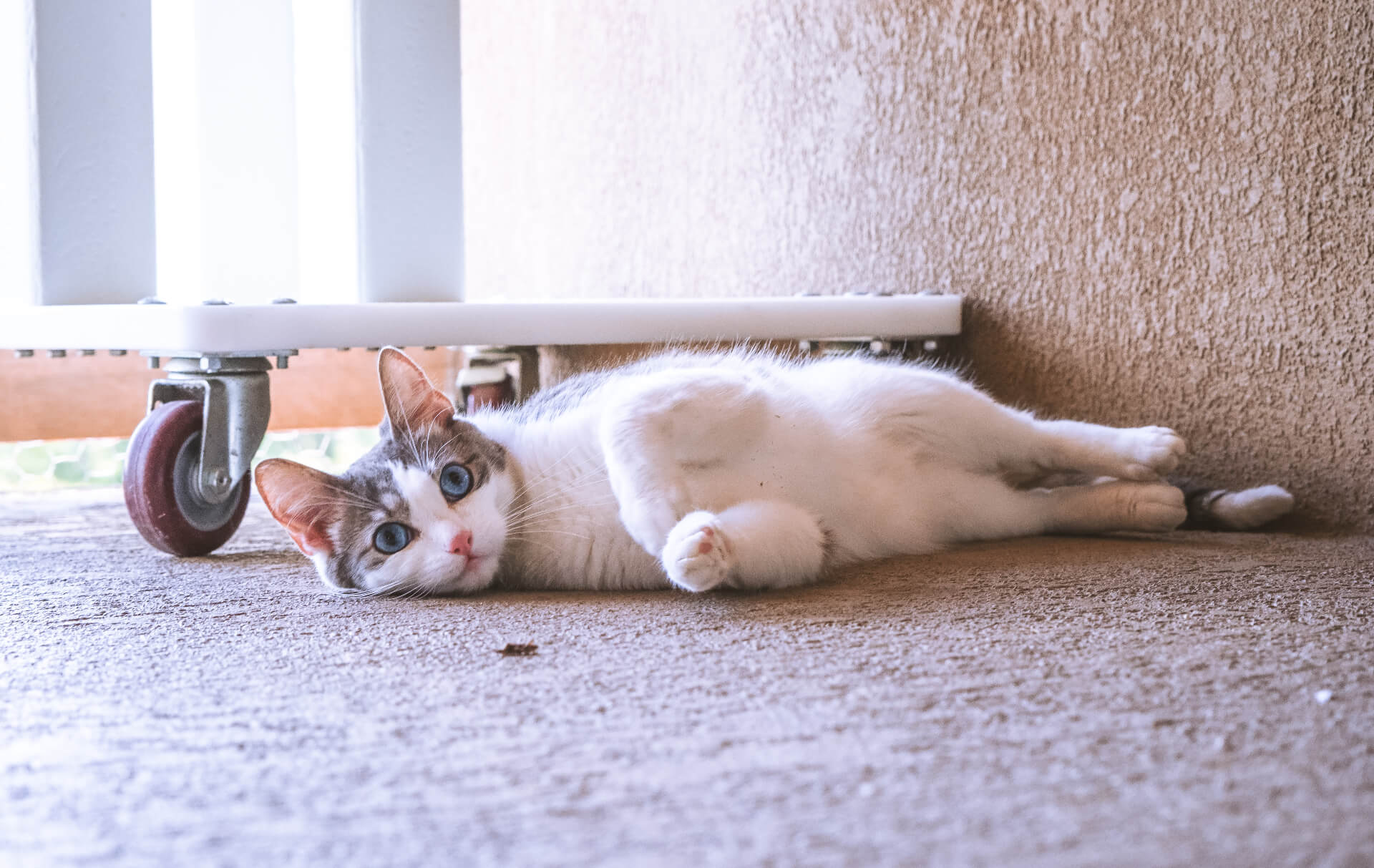
Resolving Litter Box Issues
Litter box misuse can develop as a result of a variety of issues including conflict between multiple cats, medical conditions, or a cat’s dislike for the litter box, its location, or the litter itself. Unfortunately, once a cat avoids her litter box for any reason, her avoidance can become a habit if she develops a surface or location preference for elimination. The best approach to dealing with these problems is to prevent them before they happen by making your cat’s litter boxes as appealing as possible. If your cat has developed litter box issues there are some simple steps to follow to resolve the misuse.
The First Steps
- Visit your veterinarian – Whether your cat has eliminated out of her box once or every day for a few months, it is important to rule out any medical cause for the behavior. Urinary tract infections, crystals in the urine, and other conditions can cause a cat to eliminate outside of the litter box due to pain or difficulty controlling her bladder. No amount of behavior modification or changes to the litter box will solve the problem if your cat has an underlying medical issue. Your veterinarian will need to perform an exam as well as obtain a urine sample to perform urinalysis to rule out any medical reasons for your cat’s behavior.
- Assess the cleaning routine – No one, cats included, likes a dirty toilet. As a general rule, each cat should have their own litter box and in homes with more than three cats, there should be an additional box. Litter boxes should be scooped daily and all litter should be dumped and refreshed, and the box itself cleaned weekly.
- Experiment with different litters – Many cats have preferences on litter, or have developed a habit of eliminating in a particular kind of litter. Unscented clumping litter tends to be the preference among most cats but consider experimenting with litter type if your cat has developed litter box issues; there are many, many different kinds on the market! Keep in mind that cats like continuity, so when changing their litter to a new type, you should mix the old and the new at first and gradually transition.
- Consider the box – When choosing a location for your litter box, consider how far it is from where your cat spends most of her time, noises and traffic in the area, and strong scents or scary machinery (such as the washing machine or dishwasher) that may make your cat avoid the area. Also, look at the size and shape of your box compared to the size of your cat. Experiment with the box by placing two boxes side by side with one variable different. For example, one that is covered and one that is not. One with unscented clumping litter and one with biodegradable litter. There are many factors that can influence a cat’s litter box preferences but she will show you what she likes and dislikes through use. It is also important to evaluate the height of the box! A smaller kitten or elderly cat may have difficulty using a tall-sided or covered box.
- Clean soiled areas – Cats’ sense of smell is far greater than ours. Your cat can detect even the faintest trace of urine. Typical carpet cleaners do not completely eliminate pet stains. Be sure to use an enzyme-based pet stain cleaner to completely break down and neutralize the organic material. Keep these products on hand so that you can clean a mess as soon as it happens. Enzyme-based, pet-specific cleaners can be found at most pet stores. Some varieties may even contain deterrents to help reduce the likelihood of your cat resoiling an area.
More Help
- Isolation – When a cat first avoids the box for any reason, she may find a new surface or area that she prefers over the litter box. It is possible to re-train a cat to use her box. Isolate her to one room (a bathroom works well) without access to the surface she has chosen as an alternative elimination location. Provide her with her scratching post, bed, food and water, toys and litter box in this room. Keep the litter box very clean and experiment with the box itself to determine her preferences. Usually, once a cat has consistently used her box in this space for a few weeks you can slowly provide access to the rest of the house room by room. Keep in mind that if your final litter box location is outside of the isolation room, you want to add a second box to the new location and see that she uses it before removing the first box. Otherwise she may return to her previous inappropriate elimination spot. Help your cat succeed by limiting access to what she eliminated on in the past whether that is laundry on the floor, blankets, or a certain chair.
- Identify stressors – Some cats may urinate inappropriately when experiencing stress or a change in the household. Any change in their routine, such as a new person in the household or moving can lead to changes in urination. They may also “mark” spots in the house with their urine as a means of marking their territory. Territorial “marking” may be considered part of normal behaviour and can be triggered by the presence or odour of another cat. However, some cats will also “mark” their environment in response to stress.
- Spay & neuter your cat(s) – While spaying and neutering may not completely alleviate a long-established pattern of litterbox misuse, it can be helpful for some cats and is absolutely a preventative measure to prevent marking or competitive house soiling between multiple cats in the home.
- Products – An enzyme-based cleaner for pet stains is a must when dealing with litter box misuse. However, there are other products that can deter a cat from eliminating in a certain area or help to combat stress that is leading to the inappropriate elimination. Some of these products include Feliway spay and diffusers, Sentry calming collars and sprays, and Nature’s Miracle deterrent products and calming spray.
- Special considerations for declawed cats – Declawing is a surgery that involves amputation of the end of a cat’s toes and often leads to discomfort, which can affect many behaviors, including litter box usage. If you have a declawed cat who is not always using her litter box try experimenting with litter type and depth. There are a variety of litters available today made of different materials. Look for a litter that is “soft” with even-shaped pieces, like corn cob litter, walnut litter, or “Pretty Litter.” You may opt to line your litter box with newspaper and a small amount of soft litter and refresh it after each use. Texture can be the most important factor when resolving litter box issues of declawed cats. Coarse gravel simply doesn’t feel good on declawed paws!
